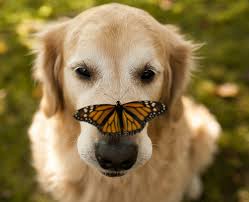Companion Training will be doing a series of blogs for the month of October on the many various types of Service Dogs. The reason there are over a dozen different specializations for Service Dogs is because dog’s have such a powerful and specialized sense of smell. Have you ever wondered just how powerful and precise your dog’s sense of smell is? What type of service dog would your dog be best at? Keep your eyes out as we dive into the world of canines and their sense of scents!
The Canine Nose
A dog’s nose not only dominates their face, but their brain, as well. In fact, a dog relies on their sense of smell to interpret the world, in much the same way as people depend on their sight. Although this contrasting world view may be hard to imagine, know that your dog interprets as much information as you do. However, they do much of this by smelling an object or animal, not by staring at it.
Born to sniff
To gain more respect for your dog’s olfactory ability, compare it to a person’s nose. Inside the nose of both species are bony scroll-shaped plates, called turbinates, over which air passes. A microscopic view of this organ reveals a thick, spongy membrane that contains most of the scent-detecting cells, as well as the nerves that transport information to the brain. In humans, the area containing these odor analyzers is about one square inch, or the size of a POSTAGE STAMP. If you could unfold this area in a dog, on the other hand, it may be as large as 60 square inches, or just under the size of a piece of typing paper. Though the size of this surface varies with the size and length of the dog’s nose, even flat-nosed breeds can detect smells far better than people. The following table shows the number of scent receptors in people and several dog breeds.

Your dog’s nose has a pattern of ridges and dimples that, in combination with the outline of its nostril openings, make up a nose print believed to be as individual and unique as a human being’s fingerprints. Companies even register nose prints as a way of identifying and helping to locate lost or stolen dogs, a system that is now being used around the world.
Look Forward to next week’s Blog!
The dog’s nose is quite possibly their most powerful organ; it is certainly one of the most dynamic of all animal systems, with activities that range from basic smell detection, to sensing fear, to memory, to emotions, to mate- and pack-selection, on to a genetic history carried from one generation to the next. Stay tuned as we continue this month’s series of blogs on the various types of Service Dogs there are today!


